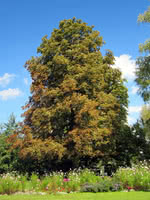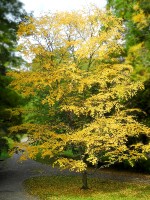Mon-Fri 9am - 5pm Mountain time
Horse Chestnut vs Sweet Birch (Black Birch)
Aesculus hippocastanum
Betula lenta
CUSTOM GROW
NOT AVAILABLE THIS SEASON - MIGHT RETURN
Horse Chestnut is a medium sized deciduous tree that is native to Greece but has been grown in North America for hundreds of years. It produces large nuts.
Sweet Birch (Black Birch) is an attractive tree with a rounded shape native to eastern North America that would be a good addition to landscapes. It has a conical growth shape when young and as it ages the shape becomes more rounded. When the leaves, shoots, or bark are crushed they give off a sweet scent, which is what gives the Sweet Birch its name.
In early spring, the trees can be tapped and the sap used to produce syrup or fermented and made into birch beer. Pollinators and birds are attracted to the Sweet Birch as the pollen and seeds serve as a good food source. In the fall, the leaves turn golden yellow which will brighten your landscape.
The inner bark has a strong wintergreen scent and has been used to produce oil of wintergreen. Small twigs and bark of the tree can be boiled in water to make a tasty Sweet Birch tea.
Horse Chestnut Quick Facts
Sweet Birch (Black Birch) Quick Facts
Toxicity: most parts of plant are toxic

